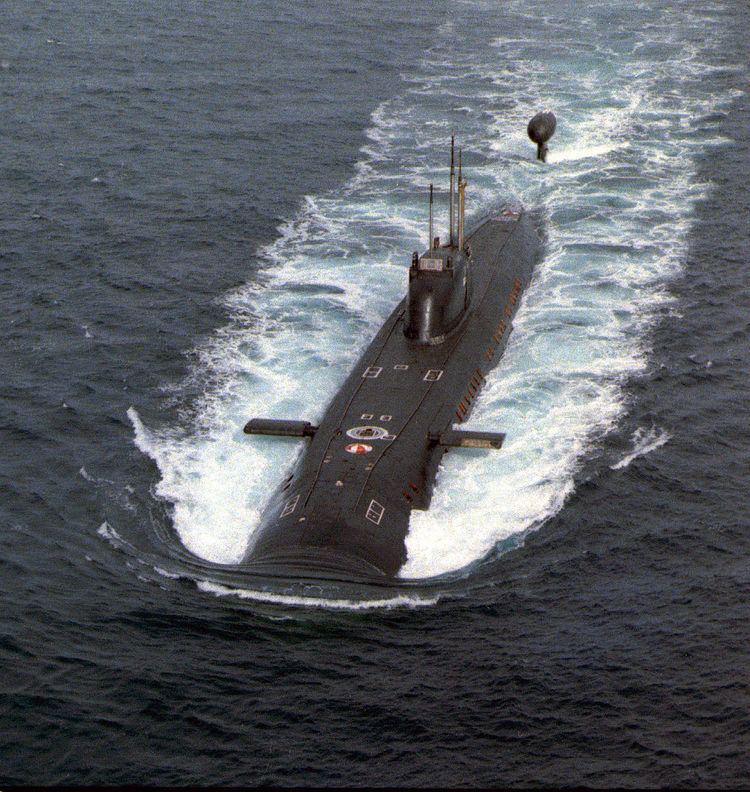In commission 5 November 1967 | In service 1967 | |
 | ||
Succeeded by Operational replacement Project 971 (Akula class)By sequence of construction Project 705 (Alfa class) | ||
The Victor class is the NATO reporting name for a type of nuclear-powered submarine that was originally put into service by the Soviet Union around 1967. In the USSR, they were produced as Project 671 (Russian: Проект 671). Victor-class subs featured a teardrop shape, which allowed them to travel at high speed. These vessels were primarily designed to protect Soviet surface fleets and to attack American ballistic missile submarines. Project 671 begun in 1959 and design task was assigned to SKB-143, one of the two predecessors (the other being OKB-16) of the famous Malachite Central Design Bureau, which would eventually become one of the three Soviet/Russian submarine design centers, along with Rubin Design Bureau and Lazurit Central Design Bureau.
Contents
Victor I
Victor I - Soviet design designation Project 671 Yorsh (Ruffe) - was the initial type that entered service in 1967; 16 were produced. Each had 6 tubes for launching Type 53 torpedoes and SS-N-15 cruise missiles and mines could also be released. Subs had a capacity of 24 tube-launched weapons or 48 mines (a combination would require fewer of each). They were 92.5m long. All disposed.
Victor II
Victor II - Soviet design designation Project 671RT Syomga (Atlantic Salmon)- entered service in 1972; 7 were produced in the 1970s. These were originally designated Uniform class by NATO. They had similar armament to Victor I. The Soviet Union discovered through its spy network that Americans could easily track Victor II-class subs and subsequently halted production of this type to design the Victor III class. They were 101.8m long. All disposed.
Victor III
Victor III - Soviet design designation Project 671RTM Shchuka (Pike) - entered service in 1979; 25 were produced until 1991. Quieter than previous Soviet submarines, these ships had 4 tubes for launching SS-N-21 or SS-N-15 missiles and Type 53 torpedoes, plus another 2 tubes for launching SS-N-16 missiles and Type 65 torpedoes. 24 tube-launched weapons or 36 mines could be on board. The Victor-III caused a minor furore in NATO intelligence agencies at its introduction because of the distinctive pod on the vertical stern-plane. Speculation immediately mounted that the pod was the housing for some sort of exotic silent propulsion system, possibly a magnetohydrodynamic drive unit. Another theory proposed that it was some sort of weapon system. In the end, the Victor-III's pod was identified as a hydrodynamic housing for a reelable towed passive sonar array; the system was subsequently incorporated into the Sierra class and Akula-class submarine SSNs. The Victor III class was continuously improved during construction and late production models have a superior acoustic performance. They were 106m long. 21 disposed.
Active submarines:
Incidents
In popular culture
A depiction of a Victor class submarine was used prominently in the James Bond film The World Is Not Enough as a key element in the film's antagonists' (Renard & Elektra) plan.
In Tom Clancy's 1986 novel, Red Storm Rising, a Victor III submarine attacks the USS Pharris causing extreme damage (the bow forward of the ASROC mounts was torn off), warranting an extensive repair.
